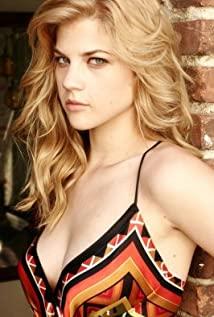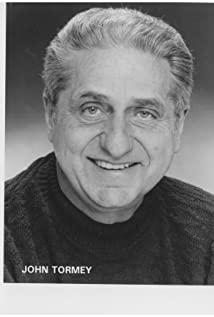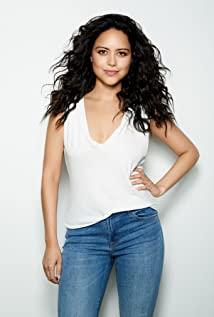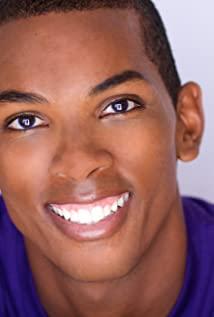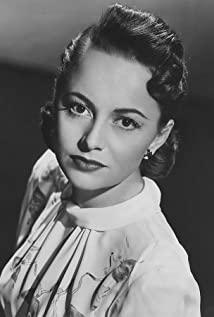
Olivia de Havilland
Olivia de Havilland (Olivia de Havilland, July 1, 1916-July 25, 2020), was born in Tokyo, Japan, an American film and television actress
[1]
.
In 1934, she walked into Hollywood as Hermia in the William Shakespeare stage play "A Midsummer Night's Dream". In 1935, he starred in the movie version of " A Midsummer Night's Dream "
[2]
; in the same year he starred in the action film " Captain Blood " directed by Michael Curtiz . In 1936, he collaborated with Errol Flynn and starred in the adventure film " The Charge of the Light Brigade "
[3]
. In 1938, he partnered with Flynn in the action movie " The Adventures of Robin Hood "
[4]
. In 1939, he co-starred in the war film " Gone with the Wind " directed by George Cukor with Vivian Mary Hartley and Clark Gable
[5]
. With Melanie, he was nominated for the 12th Academy Award for Best Actress in a Supporting Role.
[6]
. In 1941, with the role of Amy in the love film " Hold Back the Dawn ", she was nominated for the Best Actress Award at the 14th Oscar Awards
[7]
; he became an American citizen in the same year. In 1945, it filed a lawsuit against Warner Bros. and won the lawsuit over the rights of actors. The contract period of the entertainment industry should not exceed 7 years. This ended the Hollywood studio system, which is called the "Dai Harvard Act" in Hollywood.
[3]
. In 1946, she won the Best Actress Award at the 19th Academy Awards for her outstanding performance in the feature film " To Each His Own "
[8]
. In 1948, he was nominated for the 21st Academy Award for Best Actress for his neurotic performance in the drama " Dragon Swamp "
[9]
. In 1952, with the suspense film " My Cousin Rachel ", he was nominated for Best Actress in the 10th Golden Globe Awards
[10]
. In 1965, she was elected as the first female chairwoman of the Jury of Cannes International Film Festival
[11]
. In 1987 with the mini suspense film " "Anastasia: The Mystery of Anna " won The 44th Annual Golden Globe Awards 1987 for Best Supporting Actress in Television
[12]
. In 2010, he was awarded the Knight of the French Legion of Honor
[11]
.
On July 25, 2020, he passed away peacefully at his home in Paris, France, at the age of 104.
[13]
Early Experience
Olivia de Havilland was born on July 1, 1916 in a British family in Tokyo, Japan
. On October 22, 1917, her sister was born but was found to be suffering from anemia. Two years later, the father sent the two sisters and mother to live in the warmer southern California in the hope of improving the physical condition of the sisters
. In 1919, the mother and daughter began to live in the United States, and the feelings of the two parents also cracked, which eventually led to a divorce, and the mother remarried others and settled in Saratoga, the United States
.
Olivia de Havilland Middle School was spent at Los Gatos High School in California (the school’s theater performance award is named after her) , and attended a Catholic Church of Our Lady of the Convent for Girls. Later , she studied at Mills College in Oakland, California . It was when she was in Mills, she participated in the theater performance in the university. She performed well in Shakespeare's " A Midsummer Night's Dream " and won a scholarship. She was also directed by Max Reinhardt. fancy, not only starred in her own show, the more she recommended to the Warner Bros.
. After watching Olivia de Havilland’s audition, the head of Warner Bros. signed a seven-year contract with her. Since then, she has entered the Hollywood film and television circle as the company's main actor
.
Performing Experience
In 1934, Olivia de Havilland made her debut in the fantasy film " A Midsummer Night's Dream " filmed by Warner Bros. in the William Shakespeare drama adaptation . The film premiered in the United States in 1935 and has collaborated with many Hollywood actors
.
In 1935, Olivia de Havilland collaborated with Joe E. Brown to play Dolly in the comedy film "Alibi Ike" directed by Ray Enright ; there was also a collaboration with Lionel Alfred William Atwill in the action film " Captain Blood " directed by Michael Curtiz . "As La Bella. After that, she and her screen partner Errol Flynn , collaborated on eight more films, and became the golden partner
.
In 1936, Olivia de Havilland collaborated with Paul Lukas to act as the heroine in the drama film "The Merry Family " directed by Mervyn LeRoy and Michael Curtiz
. In the same year, Olivia and Errol Flynn collaborated in the action film " The Charge " directed by Michael Curtiz. "of the Light Brigade " plays the heroine Elsa
.
In 1937, Olivia de Havilland collaborated with Leslie Howard and Bette Davis in the comedy film " It's Love I'm After " directed by Archie Mayo
, which played the role of Marcia; in the same year, Olivia and Brian Aherne and Judy In cooperation, he played the role of Germaine in the comedy film "The Great Garrick" directed by James Whale . The film was adapted from a French stage play. The actor BrianAherne was Joan Fontaine's first husband and Olivia's first brother-in-law.
.
In 1938, Olivia de Havilland collaborated with Errol Flynn and starred in the adventure action film " The Adventures of Robin Hood " co-directed by Michael Curtiz and William Keighley
. In the film, she played the role of Marianne. In the same year, she again collaborated with Errol Flynn in Michael In the romantic comedy "Four's a Crowd" (Chinese translation "Guerilla Love") directed by Curtiz, she played the role of Luo Li
.
In 1939, Olivia de Havilland was invited by George Cukor to audition for Metro-Goldwyn-Mayer Inc.'s film "Gone with the Wind". She belonged to an artist under Warner Bros. at the time. Going to MGM to audition violated the artist contract. . Finally, under the lobbying of Mrs. Warner, he successfully won the role of Melanie and collaborated with Vivian Mary Hartley and Clark Gable , starring in the love war film " Gone with the Wind " co-directed by George Cukor and Victor Fleming
. For her role as Melanie in the film, she was nominated for Best Supporting Actress at the 12th Academy Awards
. In the same year, Olivia collaborated with Bette Davis and Errol Flynn in the biographical film " The Private Lives of Elizabeth " by Queen Elizabeth Tudor . "And Essex " plays the role of Mrs. Penelope
. Later, Olivia and George Brendan Nolan co-starred in a love war film "Wings of the Navy" directed by LloydBacon (Chinese translation "Navy Wings") , The film was filmed in cooperation with the United States Navy at a cost of millions of dollars . Olivia played the role of Irene Dale in the film
. And her last film of the year was also a classic Western film "Dodge City" produced by Warner Corporation in collaboration with Errol Flynn, directed by Michael Curtiz
.
In 1940, after Olivia de Havilland was nominated for an Oscar for "Gone with the Wind", she originally thought she could get a better role at Warner Company, but her previous unauthorized audition action annoyed the studio, and she did not get a better first-line film. Instead, the role was arranged in some second-line films. Olivia collaborated with Jeffrey Lynn and starred in the musical comedy "My Love Came Back" directed by Curtis Bernhardt
, in which he played a violinist Amelia Cornell. Later, she collaborated with Niv to play Gwen in the adventure film "Raffles" directed by Sam Wood ; in the same year, Olivia again collaborated with Errol Flynn to play Carson Holly in the action film "Santa Fe's Path" directed by Michael Curtiz. Die corner
.
In 1941, Olivia de Havilland collaborated with James Cagney to play Amy in the love film " The Strawberry Blonde " directed by Albert Edward Walsh . Although Olivia has been nominated for an Oscar, she is not satisfied with her role in the same type over the years. She hopes to try some more challenging roles
. In the same year, Warner’s film studio asked Olivia to collaborate with Charles Boyer to play the role of Emmy Brown in the romantic comedy film " Hold Back the Dawn " directed by Mitchell Leisen .
Both the company and herself had great hopes for this film. she did get the Academy Award for Best Actress nomination
. But eventually lost to the suspenseful film " Suspicion " starring Joan Fontaine . This blow made Olivia no longer satisfied with playing one after another "cute" roles. She hoped to perform more in-depth roles, but because of this, she was hidden by the Warner Company and was even more demanded by the company for compensation
.
In 1942, Olivia de Havilland collaborated with Henry Fonda to play the role of Professor Na’s wife Ellen in the romantic comedy film "The Male Animal" directed by Elliott Nugent
; later, Olivia collaborated with Bette Davis in the drama film directed by John Huston As Roy in " In This Our Life ", John Huston quickly fell in love with Olivia. In the film, the director gave Olivia a lot of close-ups, which made Davis a lot of dissatisfaction
. In the same year, Olivia shot a western film "The Shroud of Horseskin " in a valley north of Los Angeles . The film played Elizabeth. The first candidate for the role, Joan Fontaine, refused to play. Warner Corporation asked Olivia to replace it. This film is an ironic experience for Olivia
.
In 1943, Olivia de Havilland collaborated with Robert Cummings to play the role of a European royal princess Maria who gave up power and fell in love with civilian men in the romantic comedy film " Princess O'Rourke " directed by Norman Krasna . The film was shot in July. Due to the hot weather and her low blood sugar, she fell ill many times. During the production process, her partner Cummings was often absent, which made Olivia, who had been waiting in the sultry studio for many times, impatient. This led to work delays and even worsened to later official disputes
. In the same year, he filmed the drama "Devotion" directed by Curtis Bernhardt, which was released in 1946. After that, Olivia also participated in the shooting of David Butler 's Warner Bros. All-Star Gala "Lucky Star"
.
In 1944, Olivia de Havilland announced that her seven-year contract with Warner Bros. finally expired after being in the snow for two years. However, the studio claimed that she had the right to add to her six-month contract. An angry Olivia appealed to Warner Bros. In the following 18 months, she has been dealing with lawsuits without making any films or any work, but during this period she was sponsored by Unidentified Submerged Object , traveling in the United States and the Aleutian Islands, as well as in the South Pacific
.
In 1945, Olivia de Havilland's lawsuit was finally ruled in favor of the court. The famous "Dai Harvard Case" had a profound impact on Hollywood in the United States. From then on, brokerage companies can no longer treat their contracted actors as private goods for random manipulation. This marked a major victory for an actor in the American "film studio era" and won praise from many entertainers in the film and television industry. After returning to Hollywood, she became a freely chosen role entertainer and achieved success in her acting career
. And Warner Bros. vowed to never hire Olivia de Havilland again
.
In 1946, Olivia de Havilland made four consecutive films to make up for his lost time. The first film she shot after the comeback was also one of her favorite films. With the feature film " To Each His Own " directed by Mitchell Leisen , the role of Miss Jody was nominated for the third Oscar
. It is the story of a single mother in the First World War with her children during the dispersion, and in World War II encounter with his son when separated. At that time, she had a tropical disease and was very skinny. This fits the image of a young girl in the opening scene. During the filming, the director insisted that she eat a lot of food and a good dinner, which made her weight 20 pounds, and thus achieved the aging of this aging mother during World War II. Process
. Olivia won the 19th Academy Awards for Best Actress for her outstanding performance
. In the same year, Olivia played Ruth Collins
in the black thriller film " The Dark Mirror " directed by Robert Siodmak ; starred in the romantic comedy film "The Dress of the Bride" directed by Langfield
; and in the drama "Devotion" directed by Curtis Bernhardt As Charlotte Bronte
.
In 1948, Olivia de Havilland collaborated with Mark Stevens , starring in the drama " Dragon Swamp " directed by Anatole Litvak
. Olivia plays a mentally ill person in the film
. This is the first Hollywood film to deal with mental patients and psychiatric hospitals (previously shots were all mental patients) , as a pioneering social problem film in the United States after World War II . The film brought 20th Century Fox 's box office to $4.1 million in 1948. Olivia's appearance in the whole story also represents a major breakthrough from the tradition of Hollywood film beauty
. The role was nominated for the Academy Award for Best Actress
; and won the Best Actress Award at the Venice International Film Festival
.
In 1949, two years after receiving the Oscars, Olivia de Havilland collaborated with Montgomery Clift and starred in the love film " Heiress " directed by William Wheeler , where
she played the role of Miss Catherine. The shooting process was basically smooth. In one scene, after being abandoned, Catherine had to climb the stairs to her own bedroom and then packed the elopement suitcase and walked out of the room. She had to show a lot of frustration, depression, and embarrassment. The previous few results were not ideal. In the end, she asked the staff to fill her suitcase with heavy props. The scene where she dragged the heavy suitcase onto the stairs fully demonstrated the effect the director wanted to express
. With excellent performance in the film once again won the 22nd Oscars for best actress
, while the US Golden Globe Awards for best actress
.
In 1951, Olivia de Havilland refused to shoot Blanche Dubois in the film " A Streetcar Named Desire " because she no longer wanted to play the character image of this type of role. After this role was starred by her good friend Vivian Mary Hartley and won the Academy Award for Best Actress
. In 1952, Olivia de Havilland collaborated with Richard Burton to shoot the suspenseful love film " My Cousin Rachel " produced by 20th Century Fox and directed by Henry Koster , which played the role of Rachel
. In 1953, Olivia de Havilland left Hollywood, where he had gained fame and fortune, and ended a 19-year professional film career, and went to Paris. In 1958, Olivia returned to the United States to cooperate with Laddie and filmed a western family film " The Proud Rebel " directed by Michael Curtiz and released by Bowei Film and Television , which tells a story after the Civil War in Illinois, the United States. . This is the first cooperation between her and Laddie, the two cooperated very tacitly, and thus became very good friends. This is also her eighth and last collaboration with director Michael Curtiz. They have collaborated on seven films in the previous 20 years.
. After that, Olivia gradually faded out of the screen and turned to the stage and TV series, only occasionally appearing on the big screen
.
In the 1960s, Olivia de Havilland achieved success in stage plays during her career. On the contrary, her film "The Gift of Time" was not ideal in 1962. In 1964, she played in the thriller " Hush " directed by Robert Aldrich . ... Miriam played in Hush, Sweet Charlotte is a very important role in her career; in the same year, she played a role in the horror film " Lady in a Cage " directed by Walter Geralman . A neurotic woman trapped in an elevator was severely criticized by the United States for controversy caused by the violent scenes in the film after the film was released, and it was banned from broadcasting in the United Kingdom
. In 1965, Olivia was selected as the first female chairwoman of the Cannes International Film Festival jury
.
In the 1970s, Olivia de Havilland's film productions were reduced and occasionally appeared on the big screen. In 1972, Olivia played the leading role in the drama film Pabesa Iyona directed by Michael Anderson , and then basically shot some TV movies or mini-series works
. In 1979, Olivia de Havilland played Henry Fonda 's wife, Mrs. Warner , in the series "Roots: The Next Generations" . In the same year, she collaborated with Ursula Andress and starred in the adventure film " The Fifth Musketeer " directed by Ken Annakin produced by Columbia TriStar Motion Picture Group
, which was her last big screen work.
In the 1980s, Olivia de Havilland began to turn to small-screen films and TV series. In 1982, Olivia played the Queen’s mother in the Columbia Broadcasting System TV movie "The Royal Legend of Charles and Diana"
; she was nominated for the Emmy Awards in 1986
. In 1987, Olivia won the Golden Globe Awards for Best Actress in a Series for the role of Queen Mother Maria in the suspense film " Anastasia: The Mystery of Anna "
. In 1988, Olivia collaborated with Anthony Corin Gerald Andrews and Jane Seymour in the love film " The Woman He Loved " directed by Charles Jarrott
. In the same year, fragments of Olivia's work appeared in the drama " Nuovo cinema Paradiso " directed by Giuseppe Tornatore
.
In 2016, at the BBC’s annual awards ceremony
, 99-year-old Olivia de Havilland won the “Oldie accolade” achievement award as the “longest-lived Oscar winner”
. In the same year, she attended the César Awards in France . On July 1, American Crown Prototype Press and Random House, Inc. reissued her 1962 autobiography "Every Frenchman Has One" to celebrate her centenary
.
Personal Life
Olivia de Havilland family life
Family background: Olivia de Havilland, whose full name is Olivia Marie de Havilland, was born in Tokyo, Japan, in a family from Guernsey, Channel Islands, England. Olivia’s name comes from Shakespeare’s play " the What by You by Will Or "
.
Family members: Olivia's father: Walter de Havilland graduated from the University of Cambridge , is an English professor and Patent Lawyer . The book "The ABC of Go" was published in Japan in 1910; Olivia’s mother: Lillian Ruth was a stage actor; Olivia’s sister: Joan Fontaine (originally: Joan de Beauvoir De Havilland) was born on October 22, 1917. She is the winner of the 14th Academy Awards for Best Actress
. After Olivia's parents divorced in 1925, their sisters and mother settled in the United States. Later, his mother married George Fontaine, a department store owner
.
Olivia de Havilland's relationship experience
Love experience: In the 1930s, Olivia has always been considered that the relationship with Warner Company artist Errol Flynn was not limited to the screen
; until the 1940s, Flynn took the opportunity to kiss Oli during a collaboration. Wei, Olivia rejected the married Flynn
. Olivia also had a romantic relationship with Howard Hughes , a wealthy American , and Flynn punched Hughes at a reception
. The boyfriends who formally dated Olivia also included James Stewart and John Huston
.
Marriage experience: Olivia de Havilland had two marriage experiences. The first paragraph with the American dramatist Marcus Goodrich, the marriage began on August 26, 1946, and finally on August 28, 1953
. Olivia gave birth to his son Benminger Goodrich on December 1, 1949. On October 1, 1991, his son Benminger Goodrich died at her home in France due to complications of Hodgkin's lymphoma
.
In the second paragraph with French magazine editor and reporter Pierre Galante, the marriage began on April 2, 1955 and ended on April 30, 1979
. Olivia gave birth to her daughter Giselle Galant on July 18, 1956
. After the divorce, Pierre Galante was diagnosed with cancer. Olivia took care of him until his death in 1998 and has not remarried since
.
Olivia de Havilland's later life
After retiring, Olivia de Havilland has been living in Paris, France, on Rue Benauville, living a peaceful life. Often go to Sunday School , Sunday for children religious education in schools
. In 1979, at the 40-year retrospective celebration of "Gone with the Wind" held in Los Angeles, Olivia appeared with her daughter Gizell Galante. In 1989, after the fifty-year celebration of "Gone with the Wind", Olivia declined all interviews
.
In 2003, Olivia was invited to participate in the 75th Academy Awards . During the live commemorative clip, Ms. Olivia de Havilland received a standing ovation from the audience including President George Walker Bush
. In June 2006, Olivia attended The Academy of Motion Picture Arts and Sciences and Los Angeles Museum of Art for her 90th birthday event
.
In 2013, Olivia issued a statement after hearing the news of Joan Fontaine's death, and was "shocked and saddened" by the death of her sister. At this point, the "feud" between the two sisters was finally resolved
. On December 30, 2014, The Viennese Teardrop , the longest-lived Oscar winner in history , passed away at the age of 104. After Reiner's death, the oldest living Oscar winner was Olivia de Havilland
. On July 1, 2016, Olivia celebrated her 100th birthday
.
He passed away peacefully at his home in Paris, France on July 25, 2020 (Saturday), at the age of 104
.
Character Evaluation
Olivia de Havilland's wonderful performance in the movie not only conquered Nicolas Sarkozy , but also conquered France. Dai Harvard’s efforts to protect the rights of actors are her most important contribution to the film industry. All French people who love movies have infinite respect for Ms. Dai Harvard
.
Olivia de Havilland can only be described as noble. This woman is not only a real-life example to witness the history of film development, but also the only surviving actor in the 1939 Oscar film " Gone with the Wind ". This English girl who was born in Tokyo, Japan in 1916 and is only 1.62 meters tall, later became an excellent Hollywood actress. Her life was colorful. Olivia and sister Joan Fontaine are both well-known Hollywood actors. The two have different acting styles, but their acting skills and reputation are similar. She was nominated for an Oscar for the role of Melanie in "Gone with the Wind", which made the audience familiar with her; she also won the Academy Award for Best Actress twice with "To Each His Own" and "Miss Golden Princess". This woman who has witnessed the changes in Hollywood has enough capital to watch all the actors
.
Olivia de Havilland, known as the "Hollywood Red Rose", and her younger sister Joan Fontaine are also Hollywood film and television actresses, and are the only sisters in Hollywood who have both won the Academy Award for Best Actress . But after the award, the relationship between the two deteriorated so much that in the end they didn't know each other. But even so, the sisters Olivia and Fontaine are generally regarded by foreign media as the last two top-notch actresses in Hollywood in the 1930s and 1940s after the death of Katharine Houghton Hepburn
.
Character Dispute
The discord between Olivia and Fontaine was one of the most famous conversations in Hollywood history. Olivia is one year older than Fontaine. Although they are biological sisters, the two have been jealous since they were young, while sister Fontaine has always been at a disadvantage. At the age of 6, the sisters almost pushed each other into the swimming pool. The war between the two intensified after entering Hollywood; when Fontaine rejected her sister’s congratulations when he won the Oscar for the leading actress in 1941, Olivia was very angry and embarrassed. The method humiliated my sister
. Whoever strikes up a conversation with the big producer first, who becomes popular first, who gets the Oscar first, who gets married and have children first are all comparing each other. Sister Fontain later attributed the two years of pinching each other to the fact that they got married and won an award earlier than Olivia. Later, the addition of the swinger Howard Hughes made the sisters more ruthless
. In 1969, the sisters celebrated Christmas Eve together and became the only memorial for the sisters; when their mother died in 1975 and sister Fang Deng did not attend the funeral, the two stopped talking
. When Fontaine passed away in 2013, Olivia was very sad and said that she and her sister had reconciled privately
.


